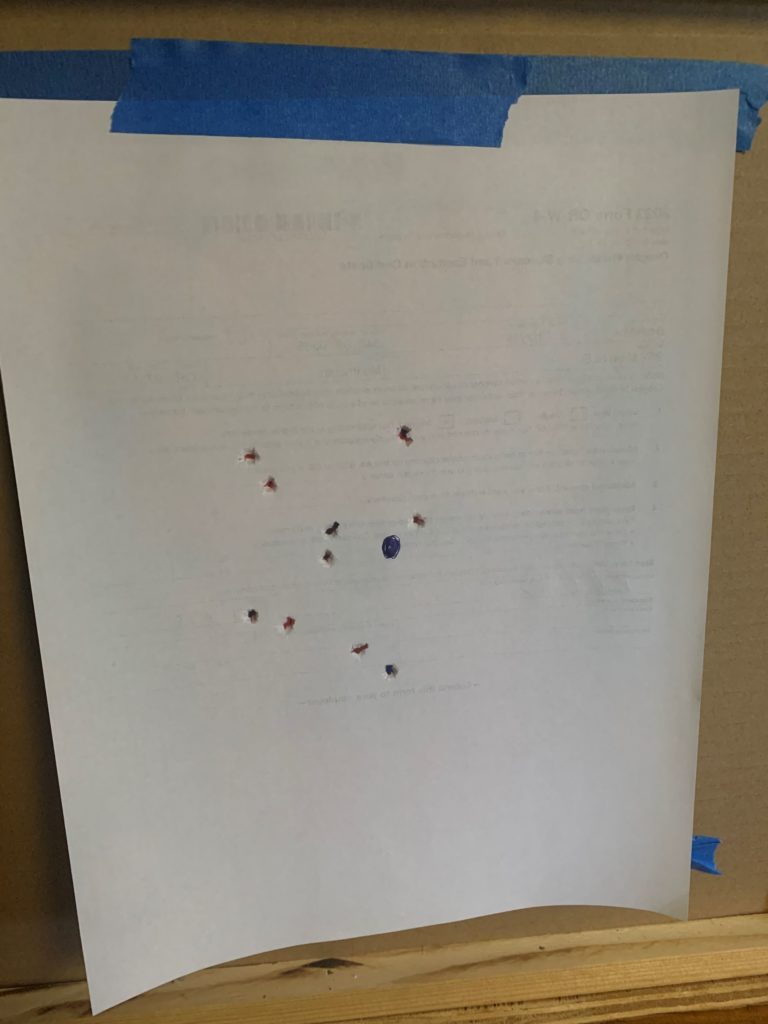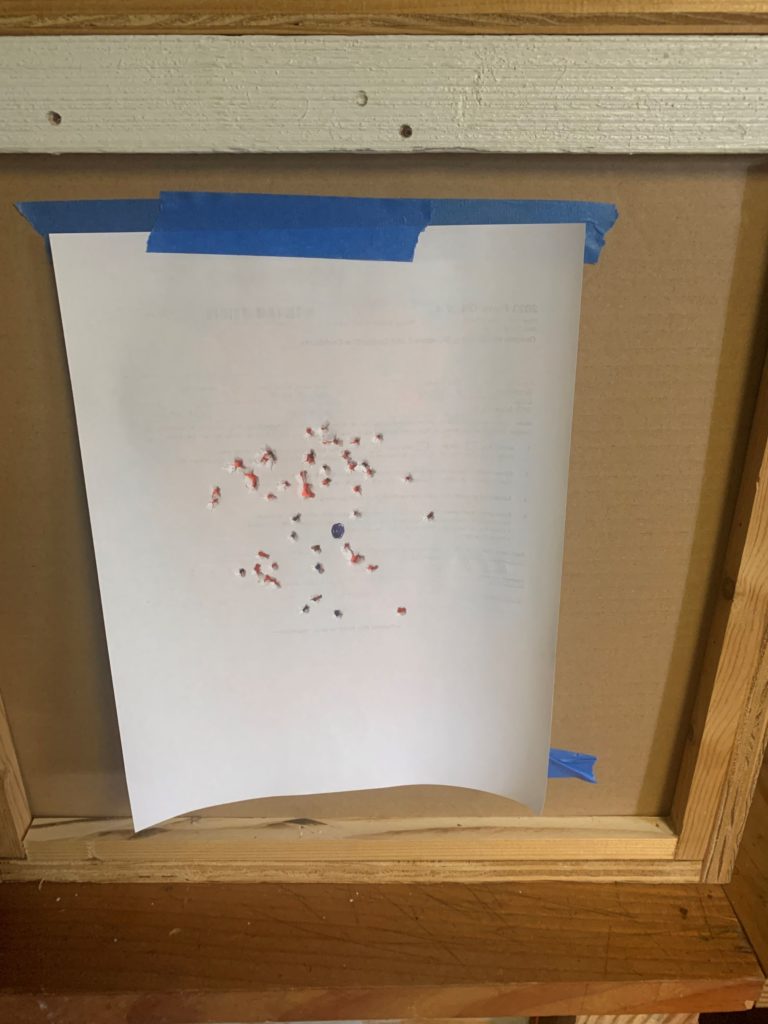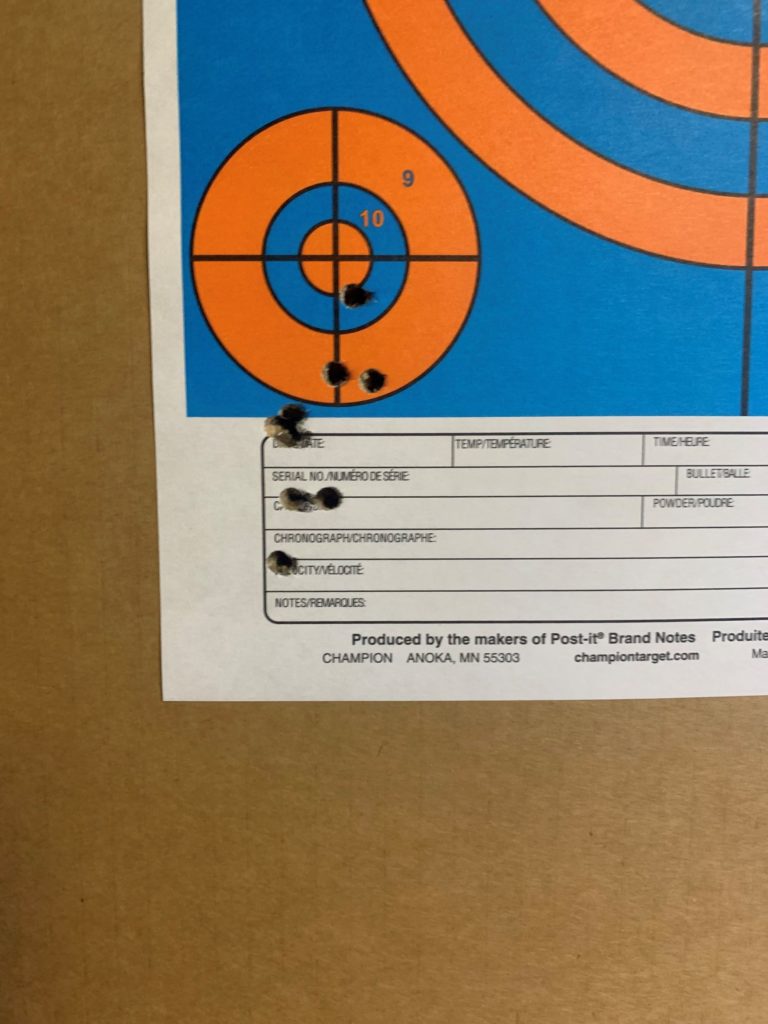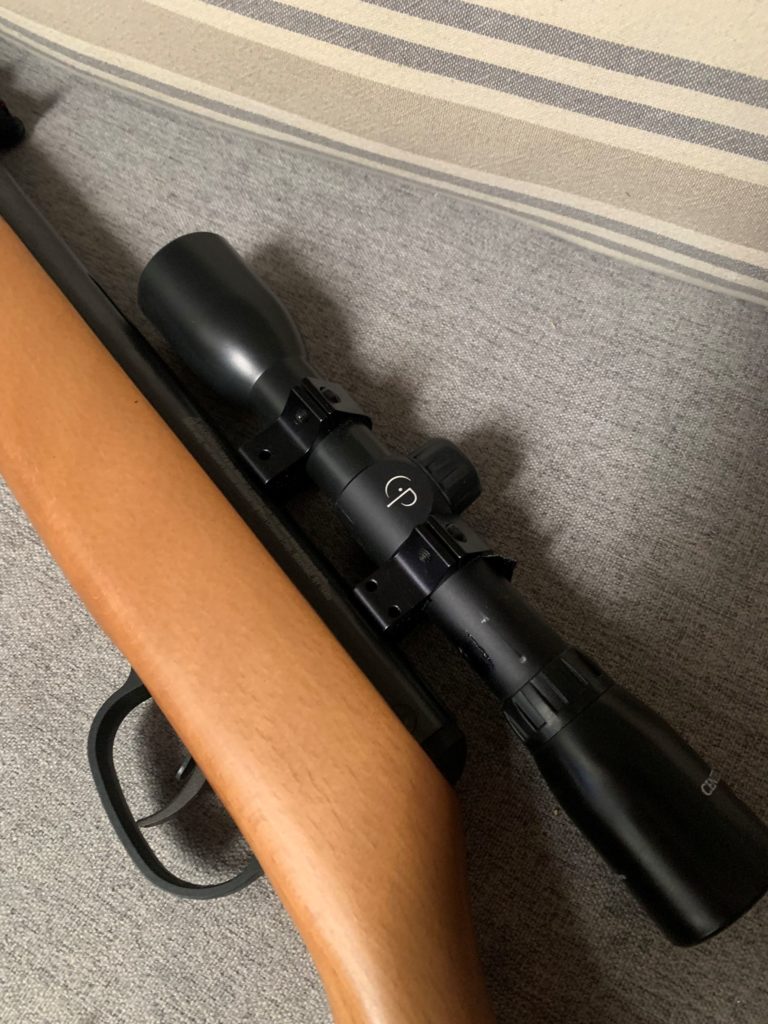You know that I am a scientist and that I like to do things just for the heck of it. An experiment if you like. Well, this is an experiment. I found some .177 pellets online that I purchased a few years ago. They are 16.4 grains in weight which would be double the normal weight of run-of-the mill air rifle pellet. For reference, that would be in the 5-9 grain range.
In my quest to find the best pest elimination combination i.e. energy, I thought that I would give these things a try. Because of the weight of these pellets, they are not able to achieve the velocity of the lighter pellets and therefore, they make less energy than the other pellets I have tested. But what about accuracy?
I was reluctant to shoot these because the label said for PCP (Pneumatically Charged Pellet) rifles only. These are rifles that are filled with SCUBA tanks or air compressors like Lewis and Clark used (did you know that?). PCP rifles are becoming a thing because they are not considered firearms and are made all the way up to 50 caliber making them suitable for hunting large game.
When I put these pellets in my break barrel Crossman, they stuck out about 1/16″ of an inch of the chamber. A normal lead pellet would compress to be forced all the way into the chamber. This was my hesitation to trying them in the first place. But I closed the barrel anyway and gave it a shot (literally). It worked. OK, now I am going to zero the scope. And here is where the problem was manifested.


The picture above shows 10 and 50 shots with no scope changes at ten yards; the rifle is on a rest. My rifle cannot shoot these pellets with any degree of precision. The reason is that these pellets are heavy for caliber and why I think they were marked PCP rifle only. I will explain the phenomenom.
Heavy for caliber means that the projectile does not match the rifling groves in the barrel. In this case, the rate of twist is not significant enough to stabilize the projectile in flight and therefore accuracy suffers. For instance a .223 Remington typically shoots a 50-60 grain bullet in a barrel that is 1:9 or sometimes 1:8. The translation of those ratios are one full revolution in 9 (or 8) inches of barrel. The faster the rate of twist, the better heavier bullets will be accurate and fly true.
This is all fine until you look at the 22-250 which uses the same bullet as the .223 Remington. Those rifles come out in the 1:8 to 1:14 rates of twist with the typical being either 1:10 or 1:12. The primary difference between the two cartridges is velocity with the 22-250 being 33-50% faster. The same rate of twist equation doesn’t apply equally between these two calibers. Here is a link to an article that goes more in depth on the subject.
Generally speaking, the heavier the bullet, the faster rate of twist you want in your rifle. Like all compromises, the better you are on the heavy end of the scale, the more likely you are going to struggle on the light end of the scale. Somewhere out there, there is an optimum ammunition and barrel combination. This one is not it for me.

Now, contrast that to this target. This is 10, 10.5gr pellets at the same distance on the same rest as the picture above. I would estimate this to be about a one inch group. I fired these cold for the first time.
End Your Programming Routine: As I say all the time, know your equipment. Now that I know, I am going to burn up these heavy pellets to get to more productive practice. The truth will be that I won’t get much out of the rest of those pellets, maybe I will work on trigger and breathing discipline. I almost thought of trying to buy another PCP rifle for this fact. But then I also need a way to charge it and the rifles are pretty expensive, in a lot of cases more than a real rifle. So, maybe sometime in the future. For now, I am going to keep going to see if I can find the inflection point.


Recent Comments